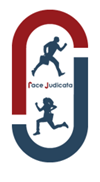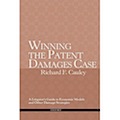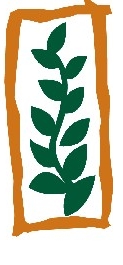(Today PatentlyO is starting a series of periodic guest posts by Professor Christal Sheppard on the underlying rationales for some of the sections of the America Invents Act. Prior to joining the University of Nebraska Lincoln College of Law this year, Dr. Sheppard was Chief Counsel on Patents and Trademarks and Courts and Competition policy for the United States House of Representatives Commmittee on the Judiciary. – JAR)
By A. Christal Shepard
Since inquiring minds want to know, I will attempt to give, in a series of posts, insights into the underlying rationales for a few sections of the America Invents Act that are causing particular confusion among my friends and new colleagues who were fortunate to not have been as intimately involved in the machinations of the America Invents Act as I have been over the last three Congresses.
***
I start this conversation with a blanket statement – these are my recollections of the rationales and do not represent the views of any particular member of Congress. More importantly, do not shoot the messenger. This blog is only intended to provide contemporaneous context, not a comprehensive analysis, before the march of time distorts memories. I will not attempt to defend; I will merely explain.
There has been a great deal of consternation and confusion about the changes to the Best Mode requirement, Section 15 of the America Invents Act. This section is plain on its face, and yes, it is, and was intended to be, bifurcated. The Best Mode requirement remains a requirement, unchanged, for obtaining a patent under 35 U.S.C. § 112 Paragraph 1; however, under the new law, Best Mode can no longer be used as a defense in any action involving the validity or infringement of a patent. More specifically, a failure of an inventor to disclose their Best Mode is no longer a basis for invalidating, canceling or making a claim unenforceable even if it is later determined that the inventor unquestionably knew of a Best Mode and intentionally did not disclose it to the United States Patent and Trademark Office (USPTO) during examination.
The bifurcated reform is a compromise that addresses the legitimate litigation concerns with the subjective nature of Best Mode without undermining the requirement for full disclosure that is the quid pro quo for the grant of a monopoly. If Best Mode was removed completely, Congress could be seen as removing yet another obstacle to trade secret protections overlapping with monopoly rights.
The impetus for removal of Best Mode from Section 112 of Title 35 of the U.S.C. came from several recommendations to Congress to limit the subjective portions of patent litigations. I point to one such recommendation that was highly influential, the National Academies’ A Patent System for the 21st Century:
Among the factors that increase the cost and decrease the predictability of patent infringement litigation are issues unique to U.S. patent jurisprudence that depend on the assessment of a party’s state of mind at the time of the alleged infringement or the time of patent application… Because the [Best Mode] defense depends on historical facts and because the inventor’s state of mind usually can be established only by circumstantial evidence, litigation over [Best Mode]— especially pretrial discovery— can be extensive and time-consuming.[1]
Although the National Academies’ report also states that eliminating Best Mode completely could be accomplished without “substantially affecting the underlying principles that these aspects of the enforcement system were meant to promote.”[2] Their, and others’, primary objection to Best Mode was that it was an unnecessary burden for litigation, similar to inequitable conduct, often pled but rarely found.
While Best Mode may be unnecessarily burdensome for litigation, Best Mode is not a superfluous requirement. It is intended to implement the constitutional directive of "promoting the progress of science and the useful arts"[3] by preventing an inventor from obtaining patent protection, “the embarrassment of a monopoly,”[4] while simultaneously concealing a trade secret for the preferred embodiments. “The purpose of this requirement is to restrain inventors from applying for a patent while at the same time concealing from the public preferred embodiments which the inventor has, in fact, conceived.”[5] There is nothing else in the patentability requirements that mandates an inventor’s disclosure of their Best Mode.
The fault with Best Mode in litigation is not a fault of principle; it is a fault of execution – the difficulty of understanding the contents of an inventor’s mind.
If one believes in the quid pro quo of full disclosure to the public in exchange for a limited monopoly, then the disclosure of an inventor’s Best Mode is essential. If monopoly is the carrot in exchange for divulging what otherwise would remain hidden as trade secrets then trade secrets SHOULD be divulged in order to patent. Changing the Best Mode requirement for obtaining a patent would be a significant deviation from U.S. policy and practice that was unnecessary to correct the perceived problem.
The law should and still does require disclosure of Best Mode, but has eliminated Best Mode from litigation. The reform addresses the concerns without undermining the requirement for disclosure.
Many scholars have questioned the fact that, under the new law, the day after a patent issues, the inventor could state that, yes there was a Best Mode known at the time of application that was not disclosed and yet the intentional nondisclosure would have no effect on the claims. The claims could not be invalidated, canceled or made unenforceable.
There has been a lot of criticism that Congress did not contemplate this result. Nothing could be further from the truth. This result was absolutely contemplated by the decision makers.
Essentially the question was, how does one stop inventors from lying to the patent office, that the inventor has no Best Mode, when the inventor in fact has a preferred embodiment? The more accurate question to ask is, when there are no obvious ramifications, why would an inventor divulge a Best Mode when they can keep it as a trade secret?
Congress did take this into account but did not address it in the legislation for a variety of reasons. I present a few of the considerations that were discussed.
- Give the USPTO authority to undertake investigations when it is presented clear evidence from a court or third party that a Best Mode was intentionally not disclosed. Here, the counterargument is that the USPTO is even less well situated than the courts for such a subjective determination. Furthermore, it is not practical to move this determination from the courts to the USPTO.
- Present evidence of intentional concealment of Best Mode to the Office of Enrollment and Discipline (OED) at the USPTO with the deterrent being the possible loss of the ability to prosecute patents, removal from the patent bar. This is arguably already possible under 35 U.S.C. § 32, Suspension or exclusion from practice. The obvious flaw is the same as in the first example; the USPTO is not well situated for subjective inquiries. Additionally, it may result in punishing the patent practitioner for situations where the inventor intentionally concealed but the patent practitioner was unaware.
- Institute a mechanism, identical to that which ultimately ended up in Section 12 of the America Invents Act – the new Section 257(e), where evidence of material fraud on the USPTO shall be referred to the Attorney General for possible prosecution under 18 U.S.C. § 1001, a criminal statute penalizing anyone who knowingly and willfully “makes or uses any false writing or document knowing the same to contain any materially false, fictitious, or fraudulent statement or entry” on any matter within the jurisdiction of the executive, legislative, or judicial branch of the Government of the United States. Again, arguably this deterrent, which is up to a five year prison term, is already possible under 18 U.S.C. § 1001 without any change in the law.
Note that all of these resolutions are arguably already possible under existing law.
One suggestion, not put forth, for the answer to the riddle of “when there are no obvious ramifications, why would an inventor divulge a Best Mode when they can keep it as a trade secret?” is make the ramifications more obvious. The USPTO could add a check box to application forms, stating “I (we), the inventor(s) have no preferred Best Mode and are aware that failure to disclose a Best Mode can result in up to a five year jail term.” But that is a matter for the USPTO and not Congress.
Would a “check box” solve the problem? No. But it is an affirmative act, as opposed to an intentional omission. This affirmative act may be useful in the exercise of 35 U.S.C. § 32 and 18 U.S.C. § 1001 should there be abuses and allows Congress to preserve the U.S.'s emphasis on full disclosure in exchange for the government grant of monopoly.
In the end, I do not disagree with the criticisms of the effect of the new law on Best Mode. But I do vehemently disagree that the consequences were neither considered nor understood by Congress.
[1] Stephen A. Merrill et al., A Patent System for the 21st Century, no. 7, 121 (2004).
[2] See id. at 7.
[3] U.S. Const. art. I, § 8, cl. 8.
[4] Thomas Jefferson to Isaac McPherson, 13 Aug. 1813.
[5] Young Dental Mfg. Co., Inc. v. Q3 Special Products, Inc., 112 F.3d 1137, 1144 (Fed. Cir. 1997).
A. Christal Sheppard is an Assistant Professor of Law at the University of Nebraska Lincoln College of Law and former Chief Counsel on Patents and Trademarks and Courts and Competition policy for the United States House of Representatives Committee on the Judiciary. Look for her next PatentlyO posting on Supplemental Examination.
 Patent Reform: Senator Kyl Introduces the alternative
Patent Reform: Senator Kyl Introduces the alternative 
